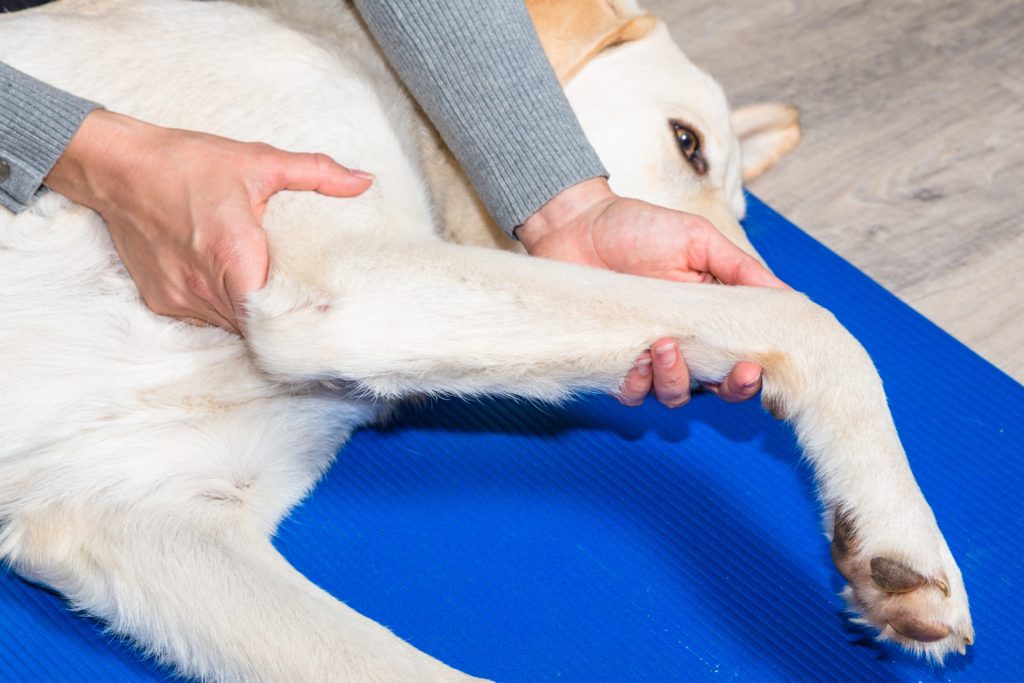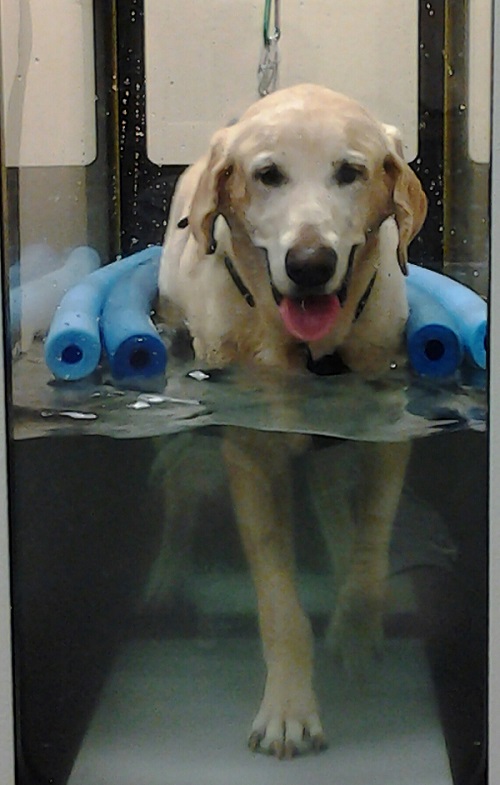Therapeutic Massage for Arthritis in Pets
As most of you know by now, arthritis is one of the most common diseases that afflicts pets. In fact, according to most estimates, 1 in 5 dogs is affected by osteoarthritis. Additionally, it is estimated that 40-92% of cats are affected by arthritis. There are numerous potential treatment modalities for arthritis including medications, rehabilitation, and even VetStem Cell Therapy. Another emerging treatment option is therapeutic massage.
Complementary Arthritis Treatments
When it comes to treating arthritis, a multimodal approach may be best. For instance, some pets may benefit from treatments such as rehabilitation or acupuncture, in addition to nonsteroidal anti-inflammatory drugs (NSAIDs) or other pain medications. The goal is for these treatments to complement one another to help make the animal more comfortable. One such treatment that is arguably underutilized is therapeutic massage.

Massage Therapy for Arthritis in Pets
Though it has been used for some time in human medical conditions, massage therapy is still an emerging field in the veterinary world. Unfortunately, studies of effectiveness are severely lacking. That being said, some human data, in addition to anecdotal evidence, suggests that massage therapy may be useful to improve the quality of life in pets suffering from arthritis pain.
Benefits of Massage Therapy for Arthritis in Pets
Massage therapy has multiple benefits that may lead to a reduction in arthritis symptoms. Most notably, massage promotes healthy blood flow to muscles throughout the body. This is particularly helpful to animals that have reduced activity and movement due to arthritis pain. By keeping muscles healthy and reducing atrophy, massage helps to facilitate healthy use of the body by maintaining muscle and joint function for as long as possible.
That being said, this field of therapy is still emerging so you likely won’t find it at every veterinary hospital. Additionally, the laws vary by state regarding who can legally practice massage therapy. As with any new treatment option, it is wise to do your own research and consult with your veterinarian to help make the most informed decisions for your pets.






 I think it is really admirable that many pet owners will adopt from shelters and rescues, thereby giving that lucky dog or cat a whole new life. Those new pet owners have made an emotional as well as financial investment in their new family members. Besides behavioral issues, many dogs may have found their way into shelters because former pet owners could not afford the treatment and care for orthopedic issues. There are also dogs that have been lost or abandoned for some time, and as a result of being on the streets, may have suffered injuries that have not healed correctly. That is why I wanted to share the story of Tommy Boy, a gorgeous Golden Retriever rescue in the loving care of his foster mom Sarah through the SCGRR, Southern California Golden Retriever Rescue. Tommy ended up in a shelter and was originally misdiagnosed with bone cancer. He was taken to a foster home to die in a better setting. Follow up x-rays and then ultimately an MRI confirmed that Tommy didn’t have cancer but he had a horrible broken pelvis. Tommy’s veterinarian suggested stem cell therapy to see if an amputation of his rear leg could be avoided. The rescue then raised the funds for the surgery and Vet-Stem reduced the cost of the stem cell processing and a year later Tommy’s radiographs continue to show improvement. We wish Tommy and all the rescues out there that help special patients like Tommy a very Happy 2010!
I think it is really admirable that many pet owners will adopt from shelters and rescues, thereby giving that lucky dog or cat a whole new life. Those new pet owners have made an emotional as well as financial investment in their new family members. Besides behavioral issues, many dogs may have found their way into shelters because former pet owners could not afford the treatment and care for orthopedic issues. There are also dogs that have been lost or abandoned for some time, and as a result of being on the streets, may have suffered injuries that have not healed correctly. That is why I wanted to share the story of Tommy Boy, a gorgeous Golden Retriever rescue in the loving care of his foster mom Sarah through the SCGRR, Southern California Golden Retriever Rescue. Tommy ended up in a shelter and was originally misdiagnosed with bone cancer. He was taken to a foster home to die in a better setting. Follow up x-rays and then ultimately an MRI confirmed that Tommy didn’t have cancer but he had a horrible broken pelvis. Tommy’s veterinarian suggested stem cell therapy to see if an amputation of his rear leg could be avoided. The rescue then raised the funds for the surgery and Vet-Stem reduced the cost of the stem cell processing and a year later Tommy’s radiographs continue to show improvement. We wish Tommy and all the rescues out there that help special patients like Tommy a very Happy 2010!